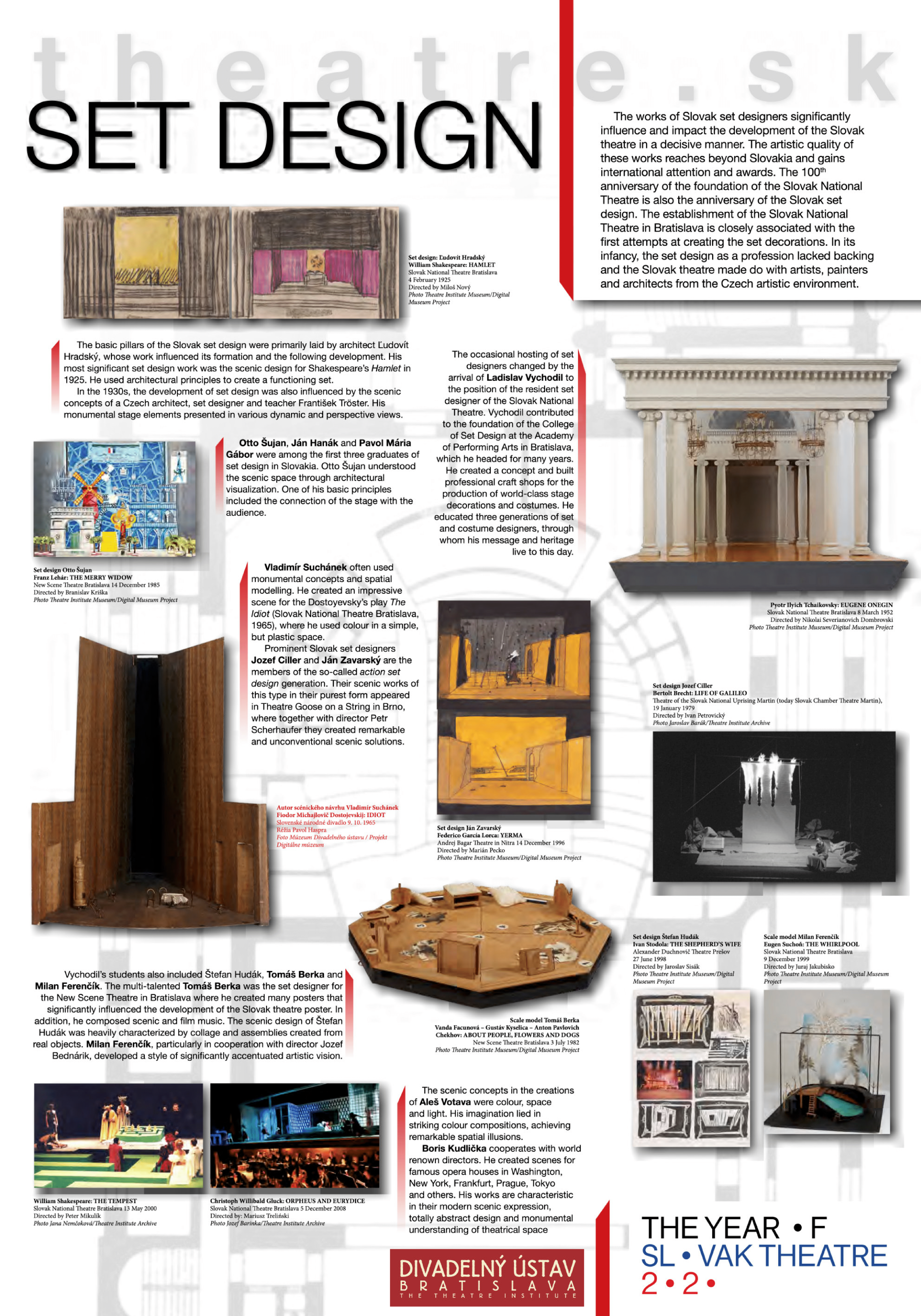
The History of Slovak Theatre – 13. Set Design
The works of Slovak set designers significantly influence and impact the development of the Slovak theatre in a decisive manner. The artistic quality of
these works reaches beyond Slovakia and gains international attention and awards. The 100th anniversary of the foundation of the Slovak National Theatre is also the anniversary of the Slovak set design. The establishment of the Slovak National Theatre in Bratislava is closely associated with the first attempts at creating the set decorations. In its infancy, the set design as a profession lacked backing and the Slovak theatre made do with artists, painters and architects from the Czech artistic environment.
The basic pillars of the Slovak set design were primarily laid by architect Ľudovít Hradský, whose work influenced its formation and the following development. His most significant set design work was the scenic design fo Shakespeare’s Hamlet in 1925. He used architectural principles to create a functioning set. In the 1930s, the development of set design was also influenced by the scenic concepts of a Czech architect, set designer and teacher František Trӧster. His monumental stage elements presented in varius dynamic and perspective views.
The occasional hosting of set designers was changed by the arrival of Ladislav Vychodil to the position of the resident set designer of the Slovak National Theatre. Vychodil contributed to the foundation of the College of Set Design at the Academy of Performing Arts in Bratislava, which he headed for many years. He created a concept and built professional craft shops for the production of world-class stage decorations and costumes. He educated three generations of set and costume designers, through whom his message and heritage live to this day.
Otto Šujan, Jan Hanák and Pavol Mária Gábor were among the first three graduates of set design in Slovakia. Otto Šujan understood the scenic space through architectural visualization. One of his basic principles included the connection of the stage with the audience.
Vladimír Suchánek often used monumental concepts and spatial modelling. He created an impressive scene for the Dostoyevsky’s play The Idiot (Slovak National Theatre Bratislava, 1965), where he used colour in a simple, but plastic space. Prominent Slovak set designers Jozef Ciller and Ján Zavarský are the members of the so-called action set design generation. Their scenic works of this type in their purest form appeared in Theatre Goose on a String in Brno, where together with director Peter Scherhaufer they created remarkable and unconventional scenic solutions.
Vychodil’s students also included Štefan Hudák, Tomáš Berka and Milan Ferenčík. The multi-talented Tomáš Berka was the set designer for the New Scene Theatre in Bratislava where he created many posters that significantly influenced the development of the Slovak theatre poster. In addition, he composed scenic and film music. The scenic design of Štefan Hudák was heavily characterized by collage and assemblies created from real objects. Milan Ferenčík, particularly in cooperation with director Jozef Bednárik, developed a style of significantly accentuated artistic vision.
The scenic concepts in the creations of Aleš Votava were colour, space and light. His imagination lied in striking colour compositions, achieving remarkable spatial illusions. Boris Kudlička cooperates with world renown directors. He created scenes for famous opera houses in Washington, New York, Frankfurt, Prague, Tokyo and others. His works are characteristic in their modern scenic expression, totally abstract design and monumental understanding of theatrical space.
This is an online version of exhibition theatre.sk.


